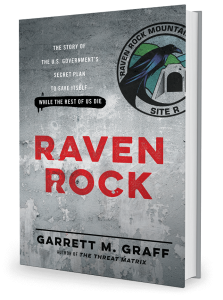As many of you know, I’ve spent much of the last three years writing a book about the FBI, tracing the history of its counterterrorism program from the 1972 Munich Olympics to the Times Square bombing in May 2010.
This product—The Threat Matrix: The FBI at War in the Age of Global Terror—grew out of a summer 2008 profile I wrote for The Washingtonian about Bob Mueller. I was fascinated that someone who has held such a key role in government for so long—he is today the only top national security official still in place from 9/11 and is now the longest-serving FBI director since J. Edgar Hoover—has been so under the radar. This was a man who stood eye-to-eye with President Bush in March 2005 and threatened to resign over what he saw as unconstitutional surveillance tactics the President was backing—and won, a man who was a highly decorated officer in Vietnam who entered the Marines from a privileged background of St. Paul’s and Princeton, a man who has led the nation’s primary domestic law enforcement agency through its most tumultuous and dangerous period, and yet he—mostly by his own choice—has been a footnote for journalists. I wanted to know more about him.
As I learned about him and the FBI, I was shocked at how often my background in geopolitics, globalization, and technology proved useful—the FBI I was learning about, with hundreds of agents working overseas, making arrests in foreign countries, tracking terrorists through remote jungle and mountain hideouts half-a-world away, bore little resemblance to the agency I knew from TV shows and movies. The FBI had gone global and no one had noticed.
At the same time, crime had gone global. Cases that once revolved around a few blocks in Queens now stretched back to the mountains of Sicily; terrorist threats went both ways: American jihadists were traveling to Somalia to attack targets there and jihadists from Yemen and Pakistan were coming here to attack us. Threats didn’t end or begin at our shores anymore. Whereas the CIA has spent the years since the Cold War closing its stations around the world, the FBI has been opening new foreign offices at the rate of four or five a year ever since the Berlin Wall fell and now has a presence in almost half the countries of the world.
To figure out where these developments came from and where they were going, I spent years pouring over FBI reports, reading once classified documents, interviewing hundreds of FBI personnel from case agents to nearly every living former FBI director, and getting an inside look at FBI bases from Budapest, Hungary, to the training facilities at Quantico, Virginia, and even the top secret lab facility where the FBI studies IEDs from Iraq and Afghanistan. I traveled with FBI Director Mueller to field offices across the country, logging more miles and more interviews with him than any other journalist in his entire tenure as director.
Altogether, when I added it up, I did over a thousand hours of interviews with over 180 people. While this is obviously an FBI-centric tale, I’ve also interviewed people throughout the intelligence community, including officers, analysts, and executives of the CIA and the NSA, members of the military and the Department of Defense, officers, detectives, agents, and executives from Homeland Security, Customs and Border Protection, the DEA, the Secret Service, the NYPD, and the Department of Justice (“Main Justice”), including the U.S. Attorney’s Offices for the District of Columbia, Eastern District of Virginia, and both the Southern and Eastern Districts of New York, as well cabinet officials and staff at the State Department, the Treasury Department, the National Security Council, the National Counterterrorism Center, Congress, the White House, and a host of other government bodies. All but three of the interviews were conducted in person, generally over the course of many hours.
I also relied upon some 100,000 pages of books, reports, articles, and primary sources, as well as court records and FBI and government files, some of which have never been released to the public before. Those sources were a wealth of information. (It was also my first in-depth experience with the challenges of the government FOIA process, which led me—with the help of national security lawyer Mark Zaid—to file a lawsuit against the Department of Justice to try to force it to change its FOIA practices.)
The synthesis of all that research, which covers more than 30 years of FBI history, much of it once classified, paints a picture of an agency at once more powerful, more global, and more secret than anyone imagines.
The Threat Matrix is in bookstores now. You can buy the book from: Amazon.com; Amazon Kindle; Barnes & Noble; Books A Million; Indiebound; Politics & Prose.



Recent Comments